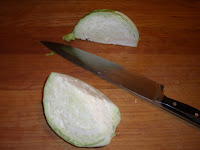 With the approach of Halloween, I am reminded of Hoot Owl Cookies. Kay Emel-Powell, who worked for Pillsbury in the Betty Crocker test kitchens, provided the recipe. It was a bribe of sorts, encouragement to her sorority sisters to provide holiday cookie recipes for a 1984 Chi-O newsletter.
With the approach of Halloween, I am reminded of Hoot Owl Cookies. Kay Emel-Powell, who worked for Pillsbury in the Betty Crocker test kitchens, provided the recipe. It was a bribe of sorts, encouragement to her sorority sisters to provide holiday cookie recipes for a 1984 Chi-O newsletter.
Despite the rather complicated recipe, I made them. Even without a picture to guide me, I figured out what to do and loved the finished products.
As I thought about posting this recipe, I began to wonder about it’s origin. Through a google search, I discovered the cookies were actually a Pillsbury Grand National Bake-off® winner. However, after further investigation, I was dismayed to discover that several cooks claim credit for creating the cookies and for winning the prize money! So, I went to the Pillsbury website and sent a request for information. This is the response I received:
Dear Ms. West: Thank you for contacting with your recipe request. We are pleased to have the opportunity to share information from our recipe files . . .
Bake-Off® Contest 08, 1956
Natalie R. Riggin ~ Olympia, WA
Prize Value: -$5,000 WINNER
They also included the original recipe. It varies just slightly from the one I’ve used over the years . . . it called for 2¼ cups of flour to Kay’s 2½ cup measure. I used 2½ cups when making my recipe + added some tips and made a few changes (the original says to remove cookies from baking sheet immediately when they come out of oven . . . they are too soft and will break so let them set for a couple of minutes.)
In addition, Pillsbury provided high altitude (3500-6500 ft) baking information: Decrease brown sugar to 3/4 cup; increase all-purpose flour to 2½ cups.
Hoot Owl Cookies Yield: about 48 cookies
¾ cup butter @ room temperature
1 cup firmly packed brown sugar
1 egg
1 teaspoon vanilla
2½ cups all-purpose flour
2 teaspoons baking powder
½ teaspoon salt
1½ squares (1½ oz.) unsweetened chocolate, melted and cooled (see my preferred substitution found at the bottom of this post)
¼ teaspoon baking soda
Semi-sweet chocolate chips – 80
Whole roasted, salted cashews – 40
1. In large mixing bowl, cream butter with brown sugar until light and fluffy. Add egg and vanilla; blend well.
2. In another bowl, blend flour with baking powder and salt, mixing until smooth. Add the flour mixture and mix to thoroughly combine.
3. In small bowl, blend melted chocolate and baking soda.
4. Remove 2/3 of the dough to floured surface. Blend chocolate mixture into remaining 1/3 of dough. If necessary, wrap both batches of prepared dough in plastic wrap and refrigerate until easy to handle. (I’ve always done this.)
5. Divide each ball of dough in half.
Roll out half of plain dough to a 10”x4” rectangle (it is easiest for me to handle if I roll it out on wax paper).
Shape half of the chocolate dough into a 10” roll. Place chocolate roll on rectangle of plain dough.
Mold sides of plain dough around chocolate roll; wrap in plastic wrap.
Repeat with remaining dough.
Chill at least 2 hours.
6. Preheat oven to 350’. Lightly grease (or spray) cookie sheets (or use parchment lined sheets or Silpat-type liners).
7. Cut prepared rolls into 1/8” - ¼” thick slices (you’ll need to end up with 40 slices per roll for a yield of 40 cookies). Place 2 slices side-by-side and touching on prepared cookie sheets to form an owl’s face (gently push together so slices bond together). Pinch a piece of each slice to form ears. Place a chocolate chip in the center of each slice for eyes; press a whole cashew between slices for a beak.
8. Bake in preheated oven for 8 to 12 minutes.
9. Let baked cookies set for a few minutes and then remove to a wire rack to cool.
10. Store cooled cookies between layers of waxed paper in a flat, tightly covered container.
In their return email, Pillsbury also provided the nutritional info for the cookie based on a yield of 40 cookies):
1 Cookie: Calories 110 (Calories from Fat 60); Total Fat 7g (Saturated Fat 3.5g, Trans Fat 0g); Sodium 170mg; Total Carbohydrate 12g (Dietary Fiber 0g); Protein 1g / Exchanges: 1/2 Starch, 1 1/2 Fat
UNSWEETENED CHOCOLATE SUBSTITUTE
1 oz. unsweetened chocolate = 3 tablespoons unsweetened cocoa powder + 1 tablespoon cooking oil
For this particular recipe, you'll need 4 1/2 tablespoons (or 4 Tbsp. + 1 1/2 tsp. cocoa + 1 1/2 tablespoon oil (or 1 Tbsp + 1 1/2 tsp.). The ADVANTAGE of using this substitution is that you can skip the step for melting chocolate listed in the recipe.







































